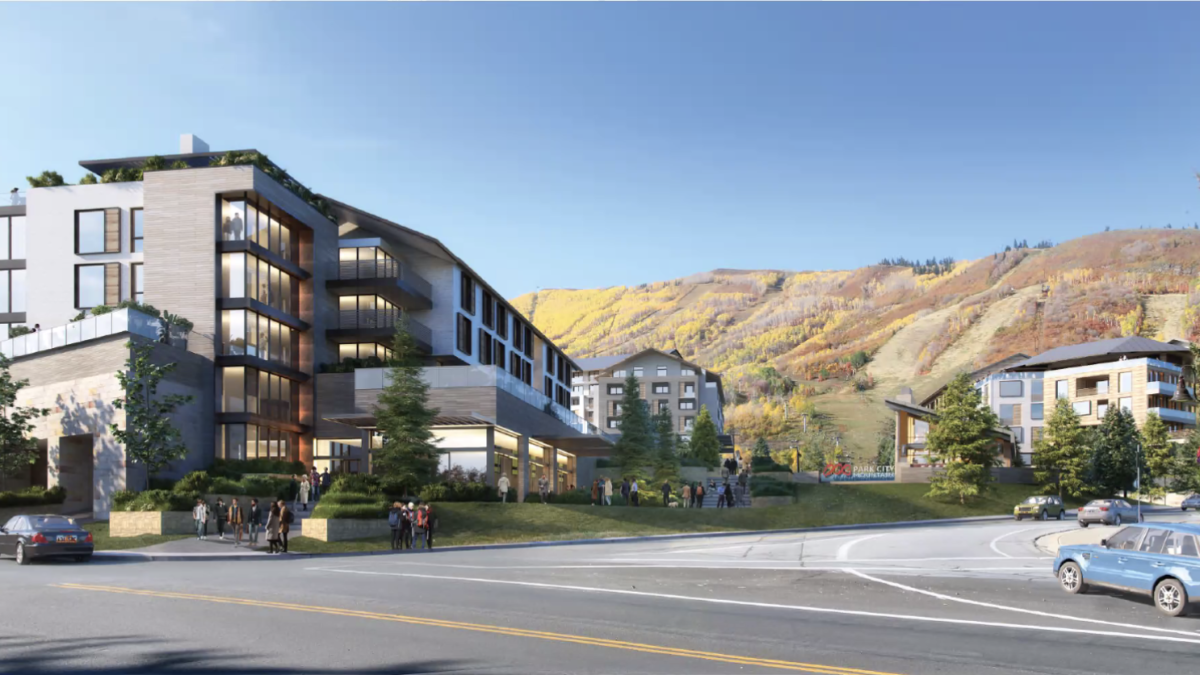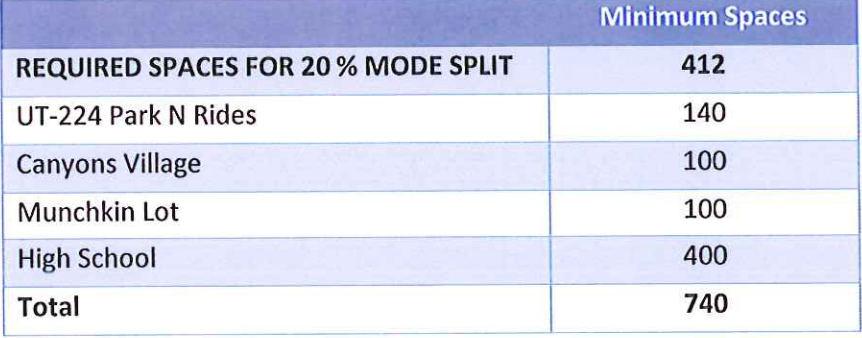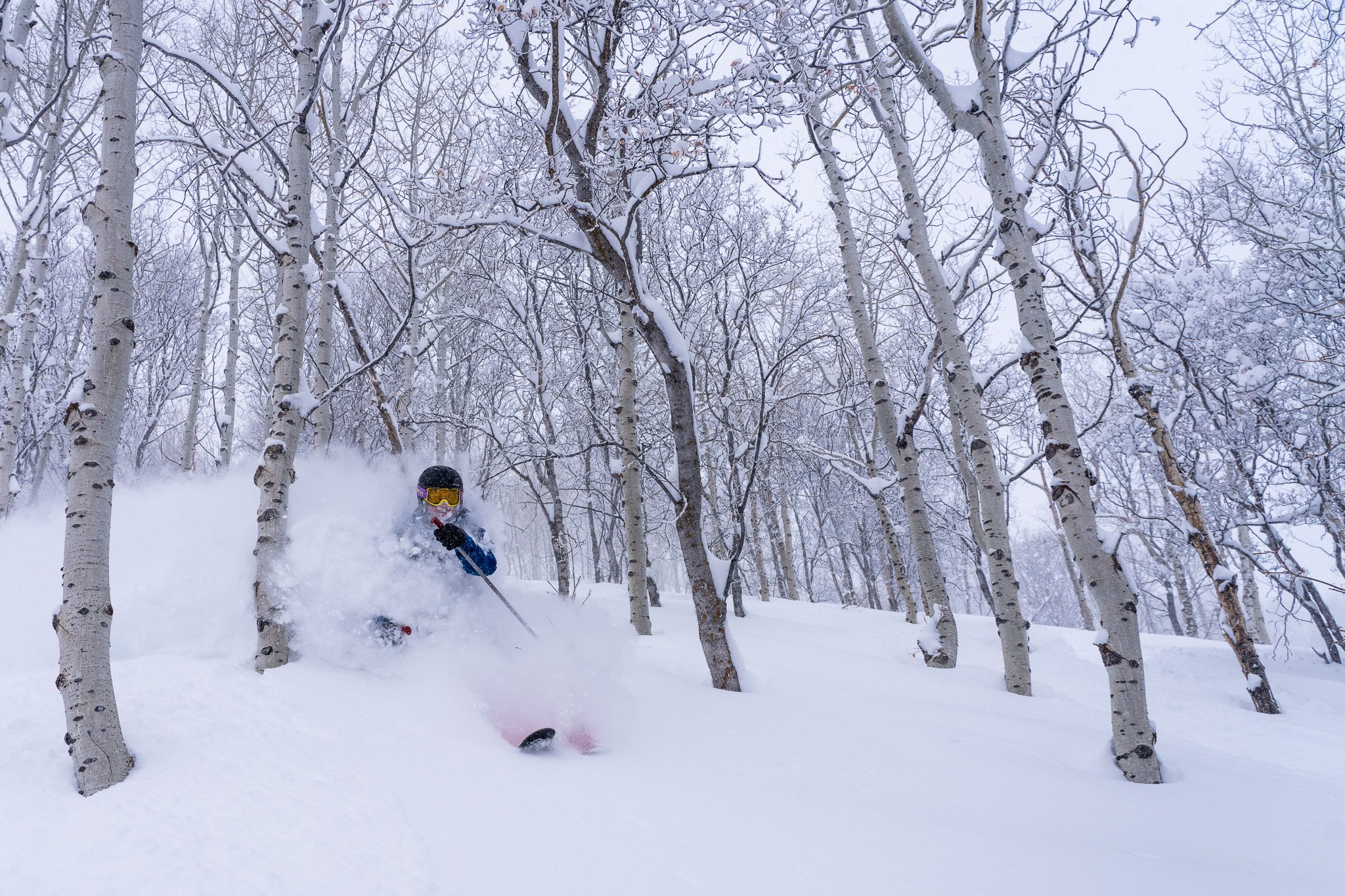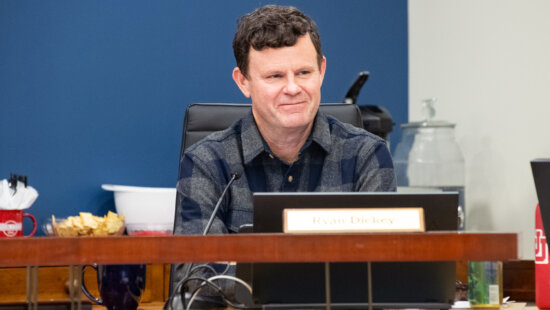Politics
PEG proposes paid parking for Park City Mountain base project

A rendering of the PEG proposal for the base area of Park City Mountain at the intersection of Silver King Dr. and Empire Ave. Photo: PEG Companies
PARK CITY, Utah — The Park City Planning Commission met Wednesday evening to discuss the Provo-based PEG Companies development proposal for the base of Park City Mountain.
PEG, in collaboration with Vail Resorts, who owns Park City Mountain, presented a new plan that implements paid parking on the 1,420 parking spaces at the base and gives the city $5.3 million to enhance bus service (see pages 19-22).
$2.9 million would go towards three new electric buses, $940,000 for operating costs, and $1.48 million in fixed costs associated with the enhanced service.
Earlier this month, Deer Valley also approached the concept of paid parking, as the redevelopment of Snow Park is currently in front of the planning commission as well.
Vail’s proposal was not in the planning commission staff report until Monday afternoon, meaning the commissioners and the public had roughly 48 hours to review the plan prior to Wednesday’s meeting. The rushed, non-comprehensive staff report left the commission waiting to make stronger conclusions until they can read a full evaluation.
At the conclusion of the meeting, the commission established that a public hearing on the project will be held on March 23. An exact timeline on when a vote would take place is unclear.
PEG is seeking to amend the 1998 development agreement on the lot at the base of the resort, and they are asking for exceptions to limits on building height. Many have criticized that the new development would substantially block the views of the mountains in the area.
The meeting on Wednesday was specifically scheduled to discuss off-site parking and traffic mitigation.
The city is requiring the project to achieve a 20% mode split at the intersection of SR-224 and Deer Valley Dr., which means removing 20% of the vehicle trips — whether that is through increased public transit use or carpooling.
Based on an AECOM report that analyzed the possibility of a park-and-ride lot in Quinn’s Junction, Vail has calculated that it needs 412 parking spaces outside of the resort to achieve the mode split. They are proposing a minimum of 700 spots through the following lots:

The Munchkin Lot is currently used for employees, and Vail is currently in discussion with Park City High School on a multi-year agreement for the 400 spots there. In the past, the contracts between the two parties have been year-to-year.
Parking for employees will move to Richardson Flat under the proposal, where private shuttles will transport workers to the resort.
Deb Rentfrow, the co-founder of the nonprofit Responsible Resort Area Development Coalition (RRAD), dismissed the AECOM report for assuming that there are only 43 peak days. She said there have been 41 at capacity days to date based on RRAD data, with roughly two months left in the season.
“If we apply the rate of capacity for just Friday/Saturday/Sunday based on the collected data since December 5th, 2021, there will be an additional 22.6 more peak days this season,” Rentfrow said.
“The 412 minimum spaces required for mode split is a figure again based on assumptions and no actual data,” RRAD’s lawyer, Nicole Deforge with the firm Fabian VanCott, wrote in a letter to the commission. “Further, the Canyons lot has been full on multiple occasions this year and we have no data on whether those people actually intended to ski at the Canyons or were turned away from PCMR.”
“The impact of this development is on Vail and PEG to mitigate, it’s not on the city,” commissioner Laura Suesser said during the commission discussion after the presentation.
She dismissed the applicant’s assertion that guest communications will improve alongside the development. “There aren’t even signs on Empire saying the upper lot on Empire is full so that people don’t drive up Empire and then try to make a right and the lot is full.
“There isn’t even appropriate signage currently… so when you talk about how the big solution is all these — communicating effectively to the public — it’s very lacking even right now without the development so I’m concerned about the promise that it will work beautifully in time.”
“Peak times, peak days — they’re not the same as they used to be,” commissioner Christin Van Dine said. “We try and go up and ski on Friday afternoon and you can’t. There’s no parking on a Friday afternoon just to try and go take four or five runs with your kid at the end of the day.”
Van Dine said it’s become a challenge to navigate “everything around here.”
“We’re seeing a drastically different remote parking plan from the applicant,” commissioner Bill Johnson said. “It seems like we’re continuing to have work sessions to assist in finding a solution when there’s been no solution presented thus far.” He emphasized that the use of the Munchkin Lot would impact traffic along Bonanza Drive.
“The applicant needs to provide a resolute solution with the data that will back it up,” Johnson concluded saying.
Chair of the commission John Phillips said he likes the idea of utilizing the Munchkin Lot, but didn’t offer extensive comments about the new plan discussed.
“The bottom line for me is — how can we make this solution to be intuitive for the people that are using it? Because I think that’s where we’ll end up having success,” commissioner Doug Thimm said.
The majority of public input during the meeting was against the project.
Park City Planning Alexandra Ananth said she expects to publish her report for the hearing by March 11.




















